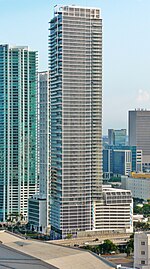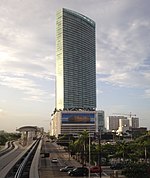Phillip and Patricia Frost Museum of Science
1949 establishments in FloridaAquaria in FloridaCoconut Grove (Miami)Commons category link is defined as the pagenameHistory of Miami ... and 5 more
Museums established in 1949Museums in MiamiNatural history museums in FloridaPlanetaria in the United StatesScience museums in Florida

The Phillip and Patricia Frost Museum of Science (formerly known as the Miami Science Museum or Miami Science Museum and Space Transit Planetarium) is a science museum, planetarium, and aquarium located in Miami, Florida, United States. The museum originally opened its Coconut Grove location across from Vizcaya Museum and Gardens in 1960. It relocated to Museum Park in the downtown area adjacent to the Perez Art Museum Miami in 2017 after the closing of the Coconut Grove location in 2015.
Excerpt from the Wikipedia article Phillip and Patricia Frost Museum of Science (License: CC BY-SA 3.0, Authors, Images).Phillip and Patricia Frost Museum of Science
Biscayne Boulevard, Miami
Geographical coordinates (GPS) Address External links Nearby Places Show on map
Geographical coordinates (GPS)
| Latitude | Longitude |
|---|---|
| N 25.785277777778 ° | E -80.187777777778 ° |
Address
Patricia and Phillip Frost Museum of Science
Biscayne Boulevard 1101
33132 Miami
Florida, United States
Open on Google Maps









